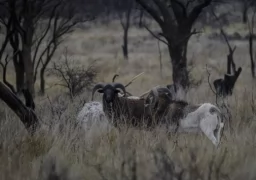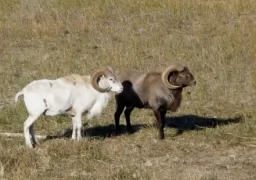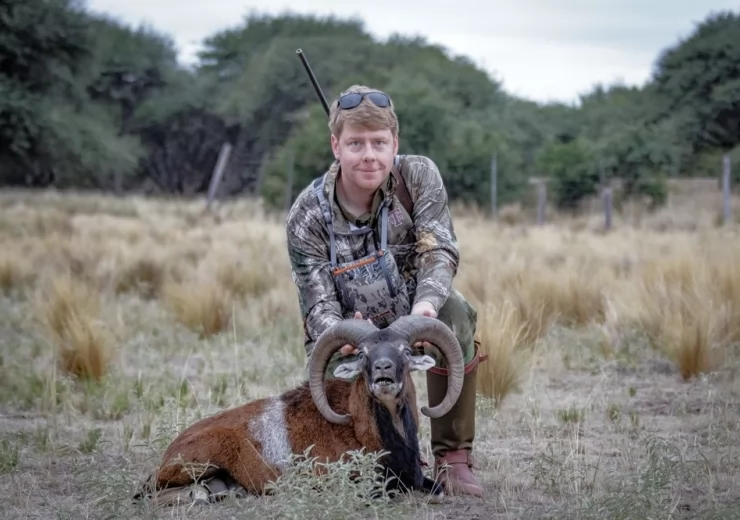INTRODUCTION
The Mouflon is thought to be one of the two ancestors for all modern sheep breeds. Mouflon sheep have small bodies, long legs and short tails. Introduced to South America by Spanish sailors hundreds of years ago, they have a red-brown color with a darker area along their back, and lighter colored side patches. Their under parts are white as well as the bottom halves of their legs, a white muzzle and white circles around the eyes. Generally, only the males have horns, but some females may have small horns. Their horns are tightly curved and are smaller than the horns of other wild sheep. The curved, spiral horns are usually around 25 inches in length and are arch back over its head. The mouflon's horns don't flare out at the end as most wild sheep's do. The size of a male mouflon’s horns determines his status in the group.
A mouflon is about the size of a medium domestic sheep with a weight range of 55-120 pounds. They are 4-5 feet long, and stand about 2-4 feet tall at the shoulders. The Mouflon’s outer coat is stiff and bristly, and covers a short, wooly undercoat. The undercoat is shed each spring. They resemble the Bighorn sheep, but are generally smaller.
The Hunting
The hunting method usually is stalking through the bushes, one hunter – one guide (PH). Shoots are usually no larger than 150 yards.
Bow Hunting: We also welcome bowhunters. For the bowhunters the hunting method is different, and we do waits in tree stands, blinds, and water holes. And we also stalk in the rutting Season.














